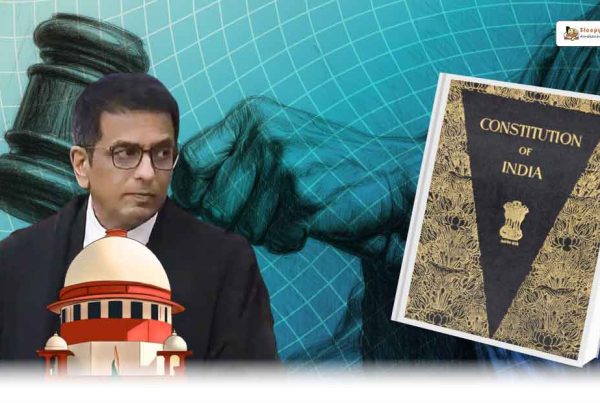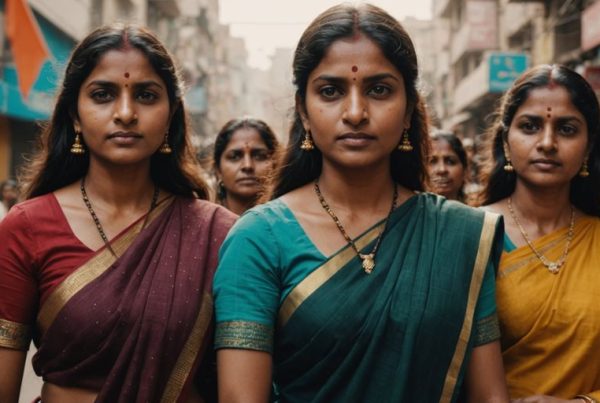The Women’s Reservation Bill is a significant piece of legislation aimed at increasing women’s representation in Indian politics. This bill seeks to reserve one-third of the seats in the Lok Sabha and state legislative assemblies for women. Understanding its implications is crucial, especially for students preparing for the UPSC exams, as it touches upon important themes of gender equality, political empowerment, and social justice. This article will break down the key aspects of the Women’s Reservation Bill and its relevance to contemporary Indian society.
Key Takeaways
- The Women’s Reservation Bill reserves 33% of seats for women in Parliament and state assemblies.
- It aims to address the gender gap in political representation in India.
- The bill is seen as a step towards achieving gender equality in governance.
- Critics argue that it may not address the diverse needs of all women.
- The bill has historical significance, reflecting decades of advocacy for women’s rights in India.
Understanding the Women’s Reservation Bill
Overview of the Bill
The Women’s Reservation Bill aims to reserve 33% of seats in the Lok Sabha and state legislative assemblies for women. This initiative is designed to tackle the political barriers that women face in India. By ensuring a significant representation of women in politics, the bill seeks to promote gender equality and empower women in decision-making roles.
Key Provisions
The key features of the Women’s Reservation Bill include:
- One-third of seats reserved for women in the Lok Sabha and state legislatures.
- Sub-reservation for women from Scheduled Castes (SC) and Scheduled Tribes (ST).
- Rotation of reserved seats among different constituencies.
- The reservation will remain in effect for 15 years from the date of commencement.
Historical Context
The journey of the Women’s Reservation Bill has been long and challenging. It was first introduced in 1996 but has faced numerous hurdles in Parliament. Despite receiving support from various political parties, it has not yet been passed into law. The ongoing debates and societal attitudes towards women in leadership roles have contributed to the delays in its implementation.
The Women’s Reservation Bill is a crucial step towards achieving gender equality in Indian politics, addressing the historical underrepresentation of women in legislative bodies.
Historical Background of Women’s Reservation in India
Early Attempts and Challenges
The journey for women’s reservation in India began during the Indian national movement. In 1931, leaders like Begum Shah Nawaz and Sarojini Naidu highlighted the need for women’s representation in a letter to the British Prime Minister. Despite these early efforts, progress was slow. The first significant recommendation for women’s reservation came in 1988 with the National Perspective Plan for Women, which suggested reserving seats for women from the panchayat level to Parliament.
Key Milestones
Several key milestones mark the history of women’s reservation:
- 1996: The first Women’s Reservation Bill was introduced in Parliament, aiming to reserve one-third of seats for women in legislative bodies.
- 2008: The bill was passed in the Rajya Sabha but never discussed in the Lok Sabha, leading to its lapse.
- 2013: A committee recommended at least 50% reservation for women in all decision-making bodies.
Influence of Women’s Movements
Women’s movements have played a crucial role in advocating for political representation. The push for women’s reservation is part of a broader struggle for gender equality in India. Despite the establishment of quotas in 1994 to improve women’s political participation in India, the representation of women in higher legislative bodies remains low.
The fight for women’s reservation is not just about numbers; it is about ensuring that women’s voices are heard in the corridors of power.
Significance of the Women’s Reservation Bill
Impact on Gender Equality
The Women’s Reservation Bill is a crucial step towards achieving gender equality in India. Currently, women hold only about 14.94% of the seats in the Lok Sabha. This bill aims to reserve 33% of seats for women, which would significantly increase their representation in politics.
Political Empowerment of Women
By ensuring that women have a voice in decision-making, the bill promotes their political empowerment. This is essential for addressing issues that affect women directly, such as health, education, and safety.
Socio-Economic Benefits
The bill is expected to bring several socio-economic benefits, including:
- Improved representation of women’s issues in legislation.
- Enhanced participation of women in the workforce.
- Better policies addressing crimes against women.
The Women’s Reservation Bill is not just about numbers; it is about creating a society where women can contribute equally to the nation’s progress.
In summary, the Women’s Reservation Bill is a significant move towards increasing women’s representation in politics, which is vital for achieving gender equality and empowering women in India. Increased representation will help address long-standing gender disparities in various sectors.
Arguments in Favor of the Women’s Reservation Bill
Need for Affirmative Action
Political parties often have a patriarchal structure, which makes it essential to have affirmative action like reservations. This ensures that women have a fair chance to be represented in Parliament. The Women’s Reservation Bill aims to reserve one-third of all seats for women in the Lok Sabha and State Legislatures.
Enhancing Women’s Participation
Having more women in Parliament can lead to better discussions on women’s issues. Currently, women make up only about 15% of parliamentarians. This low representation means that many important topics affecting women are not adequately addressed. For instance, according to the Global Gender Gap Index 2023, India ranks 127 out of 146 countries, indicating a significant gap in political empowerment.
Addressing Gender Disparities
The bill is crucial for tackling various issues such as:
- High rates of crimes against women
- Low participation of women in the workforce
- Poor nutrition levels
- Skewed sex ratios in many regions
Women in leadership roles, such as in Panchayati Raj institutions, have shown positive results. They have been more accessible and have effectively tackled local issues like corruption and public welfare.
The Women’s Reservation Bill is not just about numbers; it’s about ensuring that women’s voices are heard in decision-making processes.
Summary Table of Women’s Representation in India
| Year | Lok Sabha Women Representation (%) | Rajya Sabha Women Representation (%) |
|---|---|---|
| 1952 | 4.4 | N/A |
| 2019 | 14.94 | 14.05 |
In conclusion, the Women’s Reservation Bill is a significant step towards achieving gender equality in Indian politics. It aims to empower women and ensure that their issues are represented at the highest levels of government.
Criticisms and Concerns Regarding the Bill
Opposition from Various Groups
The Women’s Reservation Bill has faced criticism from different groups. Some argue that women are not a homogeneous community, similar to caste groups. This means that the same arguments for caste-based reservations may not apply to women. Additionally, some believe that reserving seats for women could violate the Constitution’s guarantee of equality, suggesting that it might lower women’s status in society by implying they cannot compete on merit.
Concerns About Homogeneity
Another major concern is that women come from diverse backgrounds, and not all women share the same experiences or challenges. This diversity can make it difficult to create a one-size-fits-all solution. Critics argue that the bill may not adequately represent the interests of all women, especially those from marginalized communities.
Potential Political Implications
There are also worries about the political implications of the bill. Some believe that reserving seats for women could lead to a situation where male candidates are forced to compete for only two-thirds of the seats. This could create an imbalance in the electoral process and may not lead to fair competition. Furthermore, the rotation of reserved seats might discourage sitting MPs from working hard for their constituencies, as they may lose the chance to run for re-election in the same area.
The Women’s Reservation Bill is a significant step towards empowering women, but it raises important questions about representation and equality.
Summary of Concerns
- Diversity of Women: Women are not a single group; their needs vary widely.
- Electoral Fairness: The bill may disrupt fair competition among candidates.
- Implementation Issues: The bill cannot be enforced until the delimitation process is completed, which is uncertain.
In conclusion, while the Women’s Reservation Bill aims to enhance women’s representation in politics, it also brings forth several criticisms and concerns that need to be addressed for effective implementation.
Comparative Analysis with Global Practices
Women’s Reservation in Other Countries
Many countries have implemented various forms of women’s reservation to improve gender representation in politics. Countries like Rwanda and Mexico have made significant strides in this area. Rwanda, for instance, has the highest percentage of women in parliament, with over 60% of seats held by women. In contrast, India ranks 48th out of 146 countries in political empowerment, according to the Global Gender Gap Report 2022.
Lessons from Successful Models
- Rwanda: Achieved over 60% female representation in parliament through constitutional mandates.
- Mexico: Implemented gender parity laws that require political parties to nominate equal numbers of men and women.
- Iceland: Known for its strong policies promoting gender equality, ranking first globally in political empowerment.
Global Gender Gap Index
The Global Gender Gap Index measures gender equality across various sectors, including political representation. Here’s a brief overview:
| Country | Rank | Political Empowerment Score |
|---|---|---|
| Iceland | 1 | 0.874 |
| Bangladesh | 9 | 0.546 |
| India | 48 | 0.267 |
The representation of women in politics is crucial for achieving gender equality. Countries that prioritize women’s participation often see better governance and policy outcomes.
This comparative analysis highlights the need for India to adopt effective strategies from other nations to enhance women’s representation in politics and address the ongoing gender inequality in political representation.
The Role of Women’s Reservation in UPSC Preparation
Relevance to UPSC Syllabus
The topic of women’s reservation is crucial for the UPSC syllabus, especially in the polity and governance sections. Understanding this bill helps students grasp the dynamics of gender representation in politics. It is often included in discussions about social justice and equality, making it a relevant subject for both prelims and mains exams.
Potential Essay and Interview Topics
Students preparing for UPSC can expect questions related to the Women’s Reservation Bill in various formats. Here are some potential topics:
- The impact of the Women’s Reservation Bill on Indian politics.
- Analyzing the effectiveness of reservations in promoting gender equality.
- Discussing the challenges faced by women in political representation.
Resources for Further Study
To prepare effectively, candidates should utilize a variety of resources:
- Government reports on women’s representation.
- Books and articles focusing on gender studies and political science.
- Online courses or lectures that cover the Women’s Reservation Bill and its implications.
The Women’s Reservation Bill is not just a legislative measure; it represents a significant step towards achieving gender equality in Indian politics. Understanding its nuances is essential for any serious UPSC aspirant.
This topic is not only important for exams but also for fostering a deeper understanding of the role of women in shaping the future of Indian democracy.
Highlight
The Women Reservation Act aims to improve women’s representation in Indian politics by reserving one-third of seats for women in the Lok Sabha and state assemblies, which is a significant move towards gender equality in governance.
Future Prospects and the Way Forward
Possible Amendments and Revisions
The Women’s Reservation Bill is a significant step towards ensuring women’s representation in politics. However, amendments may be necessary to address concerns raised by various groups. These could include:
- Clarifying the rotation of reserved seats.
- Ensuring that the bill applies uniformly across all legislative bodies.
- Addressing the concerns of male candidates regarding seat allocation.
Strategies for Effective Implementation
To make the Women’s Reservation Bill successful, several strategies should be considered:
- Awareness Campaigns: Educating the public about the importance of women’s representation.
- Training Programs: Providing training for women candidates to prepare them for political roles.
- Monitoring Mechanisms: Establishing systems to monitor the implementation of the bill and its impact on elections.
Long-Term Impact on Indian Politics
The long-term effects of the Women’s Reservation Bill could be profound. It may lead to:
- Increased participation of women in decision-making roles.
- A shift in political dynamics, promoting gender equality.
- Enhanced focus on issues affecting women in legislative discussions.
The Women’s Reservation Bill is not just about numbers; it is about empowering women to shape the future of Indian politics.
This bill, known as the Nari Shakti Vandana Adhiniyam, aims to reserve 33% of seats for women in legislative bodies, marking a crucial milestone in the journey towards gender equality in India.
The Women’s Reservation Bill and Its Broader Implications
Influence on Indian Society
The Women’s Reservation Bill is a significant step towards improving the status of women in India. This bill aims to reserve one-third of seats for women in the Lok Sabha and state legislatures. By doing so, it seeks to enhance women’s representation in politics, which has been historically low. Currently, women hold only about 14.94% of seats in the Lok Sabha. This lack of representation can lead to a disconnection between women’s issues and legislative action.
Impact on Future Legislation
The passage of this bill could lead to more laws that address women’s rights and issues. With more women in decision-making roles, we can expect:
- Increased focus on women’s health and education.
- Better policies to combat violence against women.
- Enhanced support for women’s economic empowerment.
Role in Promoting Gender Equality
The Women’s Reservation Bill is not just about numbers; it represents a broader commitment to gender equality. The implications for gender equality are profound. It is a step towards ensuring that women’s voices are heard in the political arena, which can lead to a more balanced and fair society. The bill is a crucial part of the journey towards achieving true equality in India, where women can participate fully in all aspects of life.
The Women’s Reservation Bill is not merely a proposal of legislation; it represents a prognosis of good governance in terms of gender equality and empowerment.
In conclusion, the Women’s Reservation Bill has the potential to reshape Indian politics and society by ensuring that women have a seat at the table. This change is essential for fostering a more inclusive and equitable future for all citizens.
The Women’s Reservation Bill is a significant step towards ensuring that women have a fair chance in politics. This bill aims to reserve a certain number of seats for women in legislative bodies, which can lead to better representation and more diverse decision-making. If you want to learn more about how this bill can impact society and what it means for the future, visit our website for detailed insights and resources!
Conclusion
In summary, the Women’s Reservation Bill is a crucial step towards achieving gender equality in Indian politics. By reserving one-third of the seats in Parliament and state assemblies for women, this bill aims to ensure that women’s voices are heard and represented. Despite facing challenges and opposition, the bill highlights the need for more women in decision-making roles. As we move forward, it is essential to support this initiative to create a more balanced and fair political landscape in India, where women’s issues can be addressed effectively.
Frequently Asked Questions
What is the Women’s Reservation Bill and why is it important?
The Women’s Reservation Bill aims to reserve one-third of seats for women in the Lok Sabha and state assemblies. This is important to ensure that women have a stronger voice in politics.
When was the Women’s Reservation Bill first introduced?
The first Women’s Reservation Bill was introduced in September 1996 by the United Front government.
Why do we need the Women’s Reservation Bill?
There is a need for this bill to help improve the status of women in society and to ensure they are represented in decision-making roles.
What are some reasons people oppose the Women’s Reservation Bill?
Some argue that women do not form a single group like caste-based groups do, and that reserving seats for women may go against the Constitution’s equality principles.
Are there any existing reservations for women in politics?
Yes, one-third of the seats in local government elections are already reserved for women, as per the 73rd Amendment Act.
How does the Women’s Reservation Bill impact gender equality?
The bill is expected to improve gender equality by increasing women’s representation in politics, which can lead to better policies for women’s issues.
What has been the historical context of the Women’s Reservation Bill?
The bill has been discussed since 1996, with several attempts to pass it in Parliament, but it faced delays and opposition along the way.
What is the current status of women’s representation in India?
As of 2023, women hold about 15% of seats in Parliament, which is an increase but still shows a significant gap in representation.




